Beyond Buildings: Impactful Solutions for Sustainable Urban Development

SERA's client-focused process includes the use of our Project Compass, a graphic tool that helps project teams build shared goals and then keep them at the center of the work. We’re using the compass on The Jackstraw project in Bend with client Killian Pacific, and it’s a good example of how the compass brings sustainable goals to fruition.
Killian Pacific: Sustainable, Community-Focused Placemaking
The Jackstraw Apartments in Bend, OR, is our first project with client Killian Pacific. Our first step to start the project was to deeply understand KP and its values.
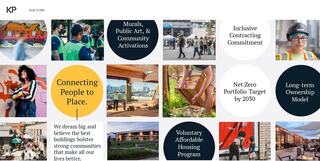
What Killian Pacific stands for
At their core, Killian Pacific is passionate about community-driven projects and design solutions that are place-based and have a positive social impact. Our multidisciplinary approach that brings architects, urban planners, landscape architects, and sustainability experts together aligned with KP’s commitment to collaboration and big thinking. From the project's start, our shared values and goals set it up for success.
The Project Compass and The Jackstraw
The Project Compass is a tool we developed that graphically depicts client priorities and project objectives in a circular layout with three categories of performance:
- Resource management
- Human health and well-being
- Sustainable placemaking
The market standard is at the center, with three performance levels radiating outward—symbolizing good, better, and exemplary performance. Every project’s Compass is unique to the place, client, and project opportunities. On The Jackstraw project, it was clear early on that KP wanted to push toward the outer circle of the Project Compass for energy performance, equity, and connection to place. But, the metrics for defining success were fuzzy: specific green building certification requirements felt too confining, and the budget was tight. It was a perfect opportunity to use the Compass to lay out all the aspirations, constraints, and trade-offs.
After considering the context, including city goals, design frameworks, and future climate conditions in Bend, we aligned all the information—context, client goals, and our expert knowledge of what’s possible—on the Project Compass.
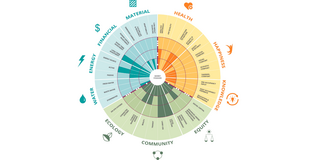
SERA's Project Compass for The Jackstraw
The Compass helped us see that we could explore opportunities in several areas, including land use, connection to nature and healthy activity, and active energy. We also saw that these goals aligned well with LEED Multifamily and Fitwel certifications, which helped the client consider exploring these frameworks for 3rd-party validation that their goals were carried out through the project from inception to completion.
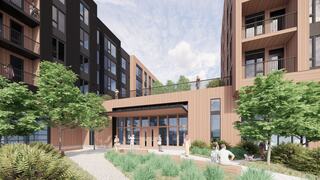
Outdoor spaces that encourage healthy activity
Health & Community: Our urban designers zoomed out to consider flows for cars, bikes, and pedestrians, ultimately settling on a woonerf design—a Dutch concept for a shared street that prioritizes safety for pedestrians and cyclists while activating public open space.
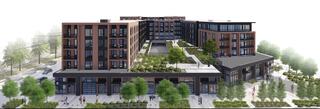
The Jackstraw: Initial rendering
Equity: To help address the lack of adequate childcare options in the area, one major equity strategy involves KP working with the State childcare licensing board to designate two units specifically designed for in-home childcare providers. Those folks will receive a discount on their rent for providing this social benefit to the community. To our knowledge, this is the first time this kind of arrangement has been attempted in a multifamily building in Oregon, and we’re excited about the precedent this is setting for large rental properties!
Energy: Engineering partners at PAE led the client through a scoring exercise to consider the drivers that influence MEP system selections beyond just first cost or energy performance. KP ranked all these criteria from most to least important. In the end, they chose central heat pump water heaters to drive down water heating energy consumption and all-electric systems with MERV 13 filters to maintain healthy, clean ventilation even during wildfire smoke events.
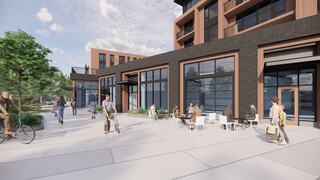
Targeting LEED Platinum and Fitwel certifications
Though there was some hesitation to get boxed into a specific green building certification program too early, the design process revealed the easy alignment of the project’s goals and the client’s values with both LEED and Fitwel. The project is on track to receive LEED Platinum and Fitwel certifications and it is the first multifamily building in Bend that is on track to achieve LEED Platinum.
We’re grateful to have forward-thinking clients who prioritize sustainability, equity, and connection to place and a tool that helps us uncover the best opportunities. We believe our best work to tackle the big challenges of climate change and social inequity is done in collaboration with other values-aligned partners!


